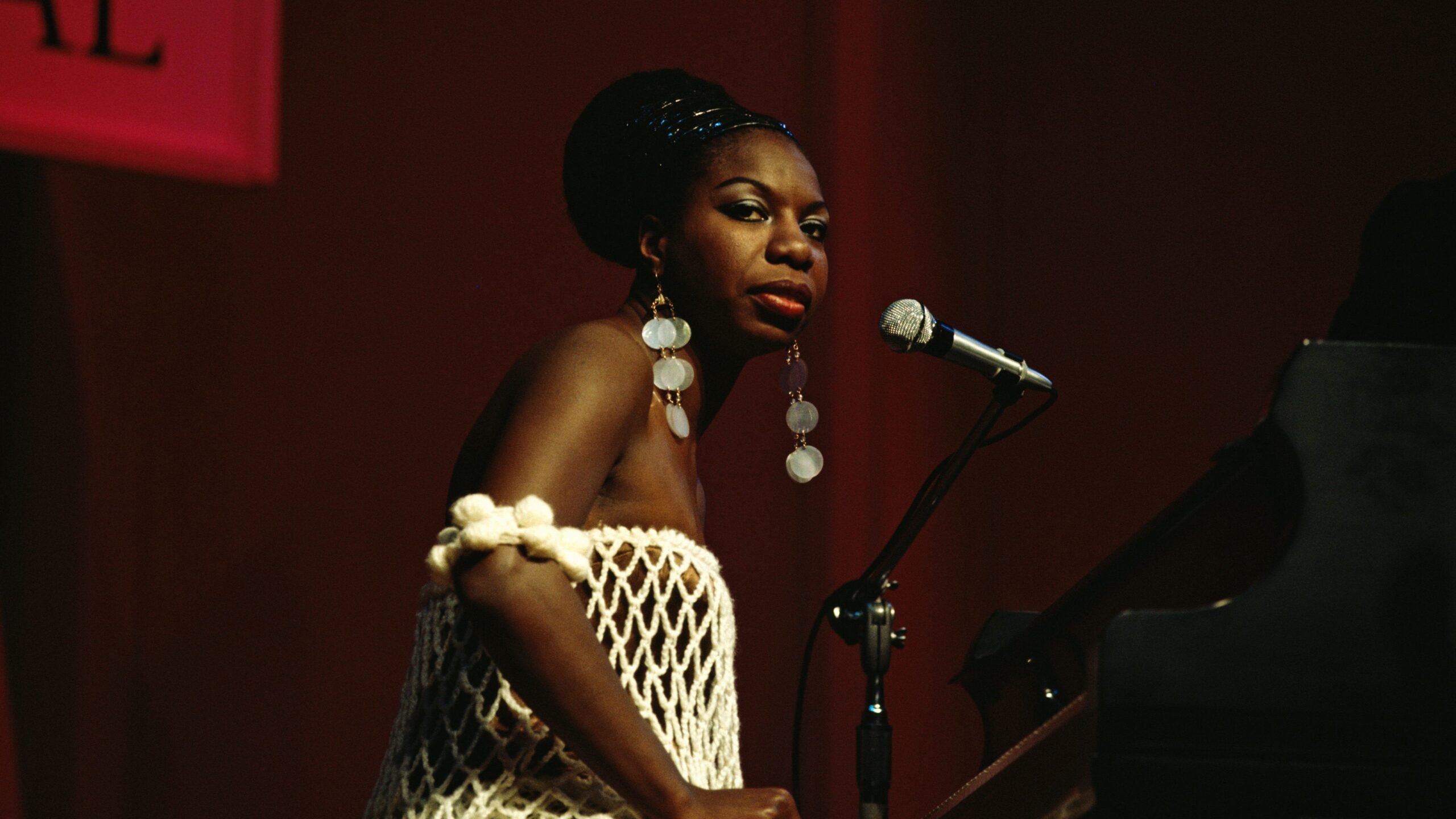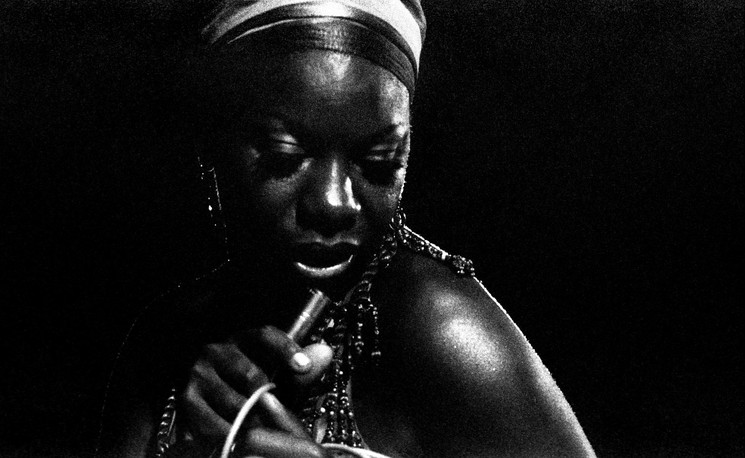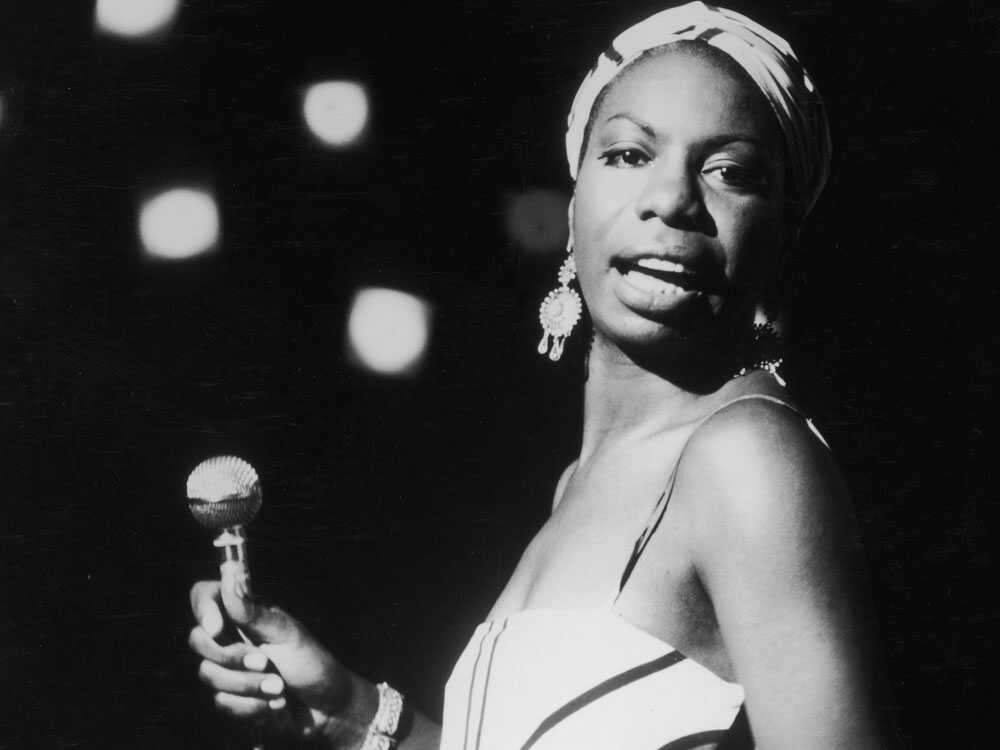Masters of Music: Nina Simone

Nina Simone – The High Priestess of Soul
In our ongoing “Masters of Music” series, we pay tribute to the legendary Nina Simone, an artist whose soul-stirring voice and impassioned performances have left an indelible mark on the world of music. Known as the “High Priestess of Soul,” Nina Simone’s artistry transcended genres, defying boundaries and breaking barriers. In this edition, we explore the life, legacy, and lasting influence of this iconic singer, songwriter, and pianist on the world of music and beyond.
- A Voice that Resonates: Nina Simone’s voice was a force of nature – rich, soulful, and commanding. Her ability to convey profound emotions through her singing was unparalleled, captivating audiences worldwide. With her unique vocal timbre and expressive phrasing, she breathed life into every lyric she sang, immersing listeners in a realm of raw human experience. Simone’s voice continues to inspire vocalists across genres, serving as a reminder of the transformative power of music.
- A Fearless Activist: Beyond her musical prowess, Nina Simone was a fearless activist who used her art as a platform for social change. Her songs like “Mississippi Goddam” and “To Be Young, Gifted and Black” became anthems for the civil rights movement, reflecting her unwavering commitment to fighting racial injustice. Simone’s activism serves as a shining example of how musicians can use their platform to advocate for equality and inspire positive change in society.
- Unifying Musical Genres: Nina Simone effortlessly traversed musical genres, blending elements of jazz, blues, gospel, folk, and classical music. Her ability to fuse these diverse styles into a seamless and cohesive sound showcased her versatility as an artist. This interdisciplinary approach has influenced contemporary musicians who, like Simone, embrace a wide range of genres, blurring the lines between musical categories to create something entirely their own.
- The Pianist Extraordinaire: In addition to her remarkable vocal talents, Nina Simone was a gifted pianist with a distinct playing style. Her classical training was evident in her precise technique and inventive arrangements. Simone’s piano skills were a vital component of her performances, adding depth and intimacy to her live shows. Many modern pianists and musicians continue to draw inspiration from her innovative approach to the instrument.
- Legacy of Empowerment: Nina Simone’s music and activism continue to resonate with new generations, inspiring artists and audiences alike. Her songs remain relevant and serve as a call to action against injustice and inequality. Through her legacy, Simone reminds us of the enduring power of music to spark conversations, challenge societal norms, and ignite change.
Nina Simone’s influence as the “High Priestess of Soul” extends far beyond her music. She was an unwavering activist, a genre-defying artist, and a powerful voice for the marginalized and oppressed. Her fearlessness, unwavering commitment to her beliefs, and innovative approach to music have left an indelible mark on the world of music and beyond. As we honor her in the “Masters of Music” series, we celebrate the enduring legacy of Nina Simone, a true icon whose voice and spirit will continue to inspire generations to come.
I wish i knew
]
Title: Masters of Music – Nina Simone’s “I Wish I Knew (How It Would Feel To Be Free)” (Live at Montreux, 1976)
Continuing our exploration of the iconic Nina Simone in the Masters of Music Series, we turn our attention to one of her most powerful and uplifting performances: “I Wish I Knew (How It Would Feel To Be Free)” recorded live at Montreux in 1976. This extraordinary rendition of a song that became synonymous with the civil rights movement captures Nina Simone’s incomparable artistry, impassioned vocals, and deep emotional connection to the struggle for freedom and equality.
Song Background: “I Wish I Knew (How It Would Feel To Be Free)” was originally written in 1963 by Billy Taylor and Dick Dallas during the height of the civil rights movement in the United States. It quickly became an anthem for the movement, expressing the longing for liberation and equality among African Americans and all oppressed people.
Nina Simone’s Interpretation: Nina Simone’s interpretation of “I Wish I Knew (How It Would Feel To Be Free)” is an emotional tour de force, combining her exceptional piano skills with her distinctive, soulful voice. Recorded live at the Montreux Jazz Festival in 1976, the performance is a testament to her ability to infuse a song with deep meaning and raw emotion.
Musical Analysis:
- Intimate Piano Introduction: The live performance begins with a tender and intimate piano introduction. Nina Simone’s fingers gently caress the keys, setting the tone for the emotionally charged journey that lies ahead. Her touch on the piano is sensitive yet commanding, drawing listeners into the heart of the song.
- Vocals Filled with Emotion: As the first verse begins, Nina Simone’s vocals exude a mix of vulnerability and strength. Her soulful voice weaves a powerful narrative of hope and longing for freedom. She infuses each word with raw emotion, channeling the pain and resilience of generations who fought for their rights.
- Introspective Phrasing: Throughout the performance, Nina Simone’s phrasing is profoundly introspective. She elongates certain phrases, allowing the meaning of the lyrics to linger and resonate with the audience. Her deliberate pacing adds depth and intensity to the song’s message, urging listeners to reflect on the significance of freedom.
- Dynamic Interpretation: Nina Simone’s dynamic range in this performance is remarkable. She effortlessly transitions from soft, delicate moments to powerful, soaring crescendos. Her ability to control the emotional arc of the song is nothing short of masterful, leaving the audience captivated by her every note.
- Expressive Piano Accompaniment: As Nina Simone sings, her piano accompaniment complements her vocals with subtle nuances and expressive chords. Her piano playing serves as both a foundation and a dialogue with her voice, adding an extra layer of emotional richness to the performance.
Impact: Nina Simone’s rendition of “I Wish I Knew (How It Would Feel To Be Free)” is more than just a song; it is a rallying cry for freedom, justice, and equality. With her undeniable talent and passionate delivery, she transforms the song into a timeless anthem of hope and empowerment.
Throughout her career, Nina Simone used her music as a platform to advocate for civil rights and social change. Her powerful performances, like the one at Montreux, brought attention to important issues and inspired generations to continue the fight for equality and justice.
Conclusion: “I Wish I Knew (How It Would Feel To Be Free)” as performed by Nina Simone at Montreux in 1976 stands as a testament to her artistry, her unwavering commitment to social justice, and her ability to connect with audiences on a profound level. Through her soul-stirring vocals and masterful piano playing, Nina Simone’s rendition of this powerful anthem continues to resonate with people around the world, reminding us of the enduring quest for freedom and the transformative power of music.
(Note: The above analysis breaks down Nina Simone’s iconic live performance of “I Wish I Knew (How It Would Feel To Be Free)” at Montreux in 1976, highlighting her expressive vocals, piano accompaniment, and the song’s impact as a powerful anthem for civil rights and social change. This addition to the “Masters of Music” series on the Enlightened Publishing website pays tribute to the profound influence and artistry of Nina Simone.)
The Incomparable Nina Simone











